17th cimoio user meeting by STL GmbH – A complete success!
17th cimoio user meeting by STL GmbH – A complete success!
With summer temperatures and great vibes, the 17th cimoio User Meeting by STL GmbH on June 25 and 26, 2025, was a great success because more than 50 participants gathered at memox in Stuttgart. They spent two days where exchange, valuable insights, and networking were at the center.
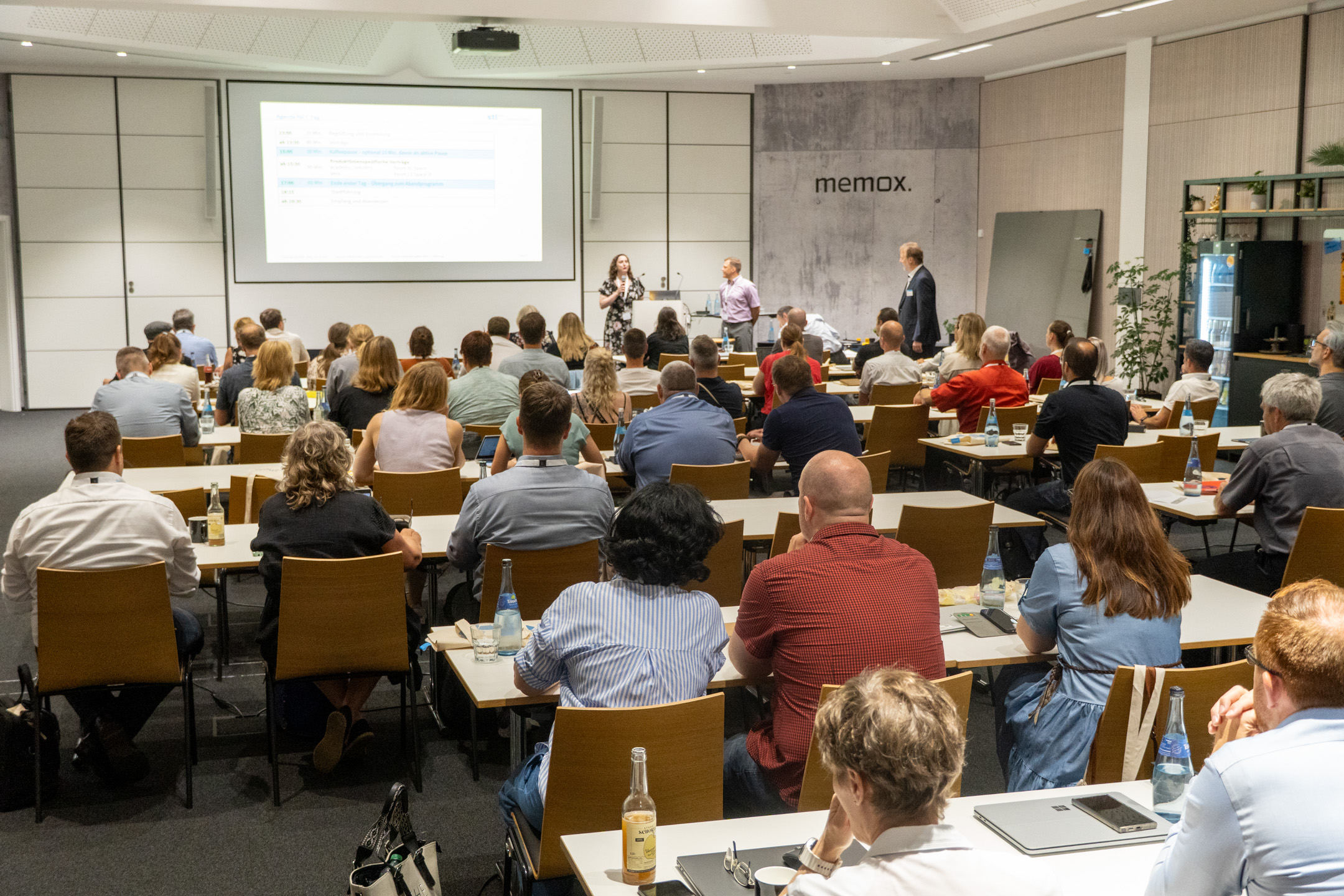
Rapt attention in the room as Laura Schopf, who organized this year’s cimoio User Meeting, welcomes the customers.
The 17th cimoio User Meeting in 2025 marked a step into new territory for us. Last year, we introduced product lines for cimoio. Since then, the number of users of cimoio aero has grown significantly. At the same time, more and more projects have been launched with the cimoio industry and cimoio academy product lines.
For this year’s User Meeting, it became clear that a notable portion of the registrations came from users of our cimoio aero product line. Therefore, we decided to divide the group into topic-specific tracks after the general information session.
This resulted in three main thematic blocks:
-
General information about cimoio, with a focus on Release 4.02
-
Specialist session on the cimoio aero product line and aviation
-
Specialist session on the other product lines
In previous years, the opening session let each participant introduce themselves, their company, and their use of cimoio. With 50 attendees from 26 companies, we chose a different approach this year. Instead of individual introductions, we presented the companies and their attending team members collectively. We then focused on personal exchange during the breaks and social program.
After that, we introduced the various topics relevant for the current year — some of which referred solely to:
-
a specific product line (especially in the case of cimoio aero),
-
a particular function, system setting, or module — a specific feature of cimoio, or
-
a customer-specific process.
In 2024/2025, requirements from cimoio academy and cimoio industry customers evolved in a similar way. In Sales & Marketing, especially in user interface functions for purchasing customers, significant changes took place. One driver was legal updates, such as the German Accessibility Strengthening Act (BFSG), effective June 28, 2025. Another driver was the need to make large training portfolios more accessible to customers.
We started with Release 4.02. As always, a year of technical development had produced a very long list of changes. We therefore selected key adjustments for the User Meeting and presented them in short talks. This allowed us to highlight the most relevant and interesting topics for the broadest group of attendees.
The Agenda
We focused on the following topics:
-
Process Automation: Intelligent condition checks to automatically trigger actions, initiate changes, or flag problematic data states. This is a topic we’ve been preparing for a long time — and it’s now being increasingly implemented by our customers. It helps support administrative teams by allowing them to focus more on knowledge-based processes.
-
Integration of Machine Translation Systems: A major milestone for customers working in multilingual systems — allowing for efficient translation of email templates, UI texts, or document content. We implemented an interface to the DeepL API, which is now available. Other similar systems can also be integrated through custom interfaces.
-
Learning Tools Interoperability (LTI): Until now, setting up a learning platform in cimoio required uploading SCORM packages or connecting external content via AICC. The new LTI interface, based on version 1.3, enables learners to access content from external platforms directly from within cimoio — while still capturing learning progress in the system.
-
Class Logbook: For customers offering classroom-based courses, it is now possible to track attendance on a day-by-day basis.
At this point, we took our first extended break and enjoyed a lighter interlude: Sven Bartolcic from the health platform Sitzkrieger got us moving again with an energizing active session — more on that later.
The presentations on aviation topics were largely delivered by qamaas, our implementation partner for cimoio aero. These were complemented by expert talks from STL GmbH staff on technical solutions within the cimoio system. Together, they provided a comprehensive overview of how cimoio aero can be effectively used in the aviation sector.
The agenda covered the following topics:
-
OJT (On-the-Job Training):
The German Federal Aviation Office (LBA) writes:
“While trainees are taught theoretical and practical content in the type training course, this knowledge should be applied and deepened during OJT in a real maintenance environment. The trainee is guided and supported by supervisors (mentors) to gain the experience required for certifying staff authorization.”
For digital qualification processes, this training must be documented in an IT system — and cimoio offers the necessary features for this. -
Interfaces to AMOS and iLearn:
This session focused on the existing interfaces to AMOS and iLearn, including how they are integrated and used in practice. -
Qualification Validation:
In aviation, qualifications are not always gained through internal training alone. Recognition of existing or externally obtained certificates is also possible. The presented functionality allows employees to upload certificates, which — after being approved — can be linked to the relevant qualifications for official confirmation. -
Importing AERO Data: In the cimoio aero environment, industry-relevant data can be imported, and this includes complex relationships between qualifications, qualification profiles, and authorizations. After import, these relationships must be precisely represented in cimoio as they were in the original source system.
-
Qualification Cockpit:
This topic focused on how the current qualification status of employees is displayed — with different views and interpretations depending on who accesses it:-
the employee themselves
-
a manager planning for their team
-
a qualification officer reviewing their area
-
or HR development overseeing the entire workforce
-
-
Best Practices:
A collaborative exchange of good and best practices from real-world customer use cases.
The product lines cimoio industry, cimoio academy, and cimoio certify met with their aviation colleagues to exchange ideas. Here, they discussed topics relevant to selling training and conducting regulatory qualifications. However, this did not involve authorizing employees at the same time.
Some of the topics were driven by customer requirements, while others were influenced by external factors such as legislation.
Christian Bott created the necessary “safe room” for creative and engaged discussions with his keynote on the second day—more on that later.
Agenda based on customer requirements:
-
Examination Regulations: For companies issuing graded certificates based on their training, such as SABW, the grading module in cimoio is an important component. This module was overhauled and expanded for the new Release 4.02.
-
Hybrid Events: A relevant component for training providers who mix online and in-person participation. In training management, the question arises: how to ensure the maximum number of attendees in a physical room is not exceeded while still clearly showing that there are available spots—just only online? These and other questions are addressed with our hybrid event features.
-
External Offer Creation: When an academy—like SABW—sells training on the external market, it usually has capacity for in-person training. If these are not fully utilized, it makes sense to resell these spots to external customers to optimize capacity. cimoio now supports the entire process from external inquiry to event execution and invoicing.
-
I3 Search: I3 stands for “integrated, inverted index search” and allows very efficient searching for products, events, and learning materials. This push-method was especially optimized for customers searching the catalog and equipped with filtering facets.
-
Open Badges: Open Badges are a technical tool that confirms successful completion of training. On one hand, they allow learners to prove their educational achievements through a collection of badges. On the other, they offer a marketing channel for training providers. The graphical display of an Open Badge as a digital image simultaneously advertises the educational offerings of the training provider.
Agenda based on legal requirements:
-
Accessibility Strengthening Act (Barrierefreiheitsstärkungsgesetz, BFSG): For customers offering B2C training, the enforcement date of June 28, 2025, was critical. From that day, they had to assess whether the law applied to them. If so, they needed to take measures to prepare their learning content and interfaces accordingly. We presented how cimoio supports customers in this process.
-
Electronic Invoices: XRechnung is the standard for electronic invoicing for public clients, implementing the EU Directive 2014/55/EU in Germany. Based on this, the ZUGFeRD format was developed to standardize not only electronic invoicing to public clients but also in the B2B sector. cimoio is now also capable of creating such invoices.
Nuances:
Declaring war on sitting with a sword…
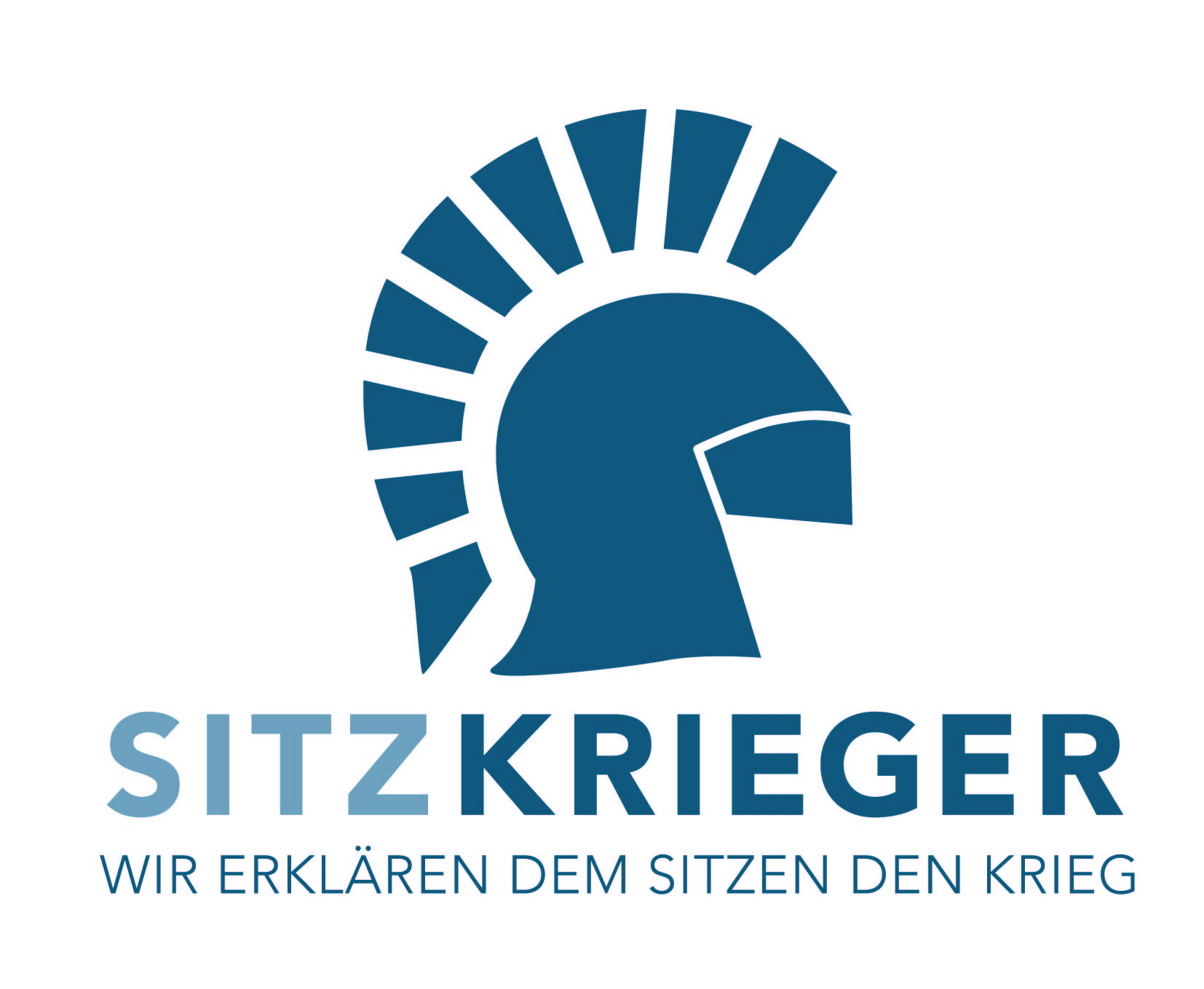
Sitzkrieger in Motion
Physical activation was also provided: On the afternoon of the first day, Sven Bartolcic from Sitzkrieger brought new energy to the room with an active break. A welcome interruption that got both body and mind moving, allowing our participants to dive back into the presentations afterward with full focus.
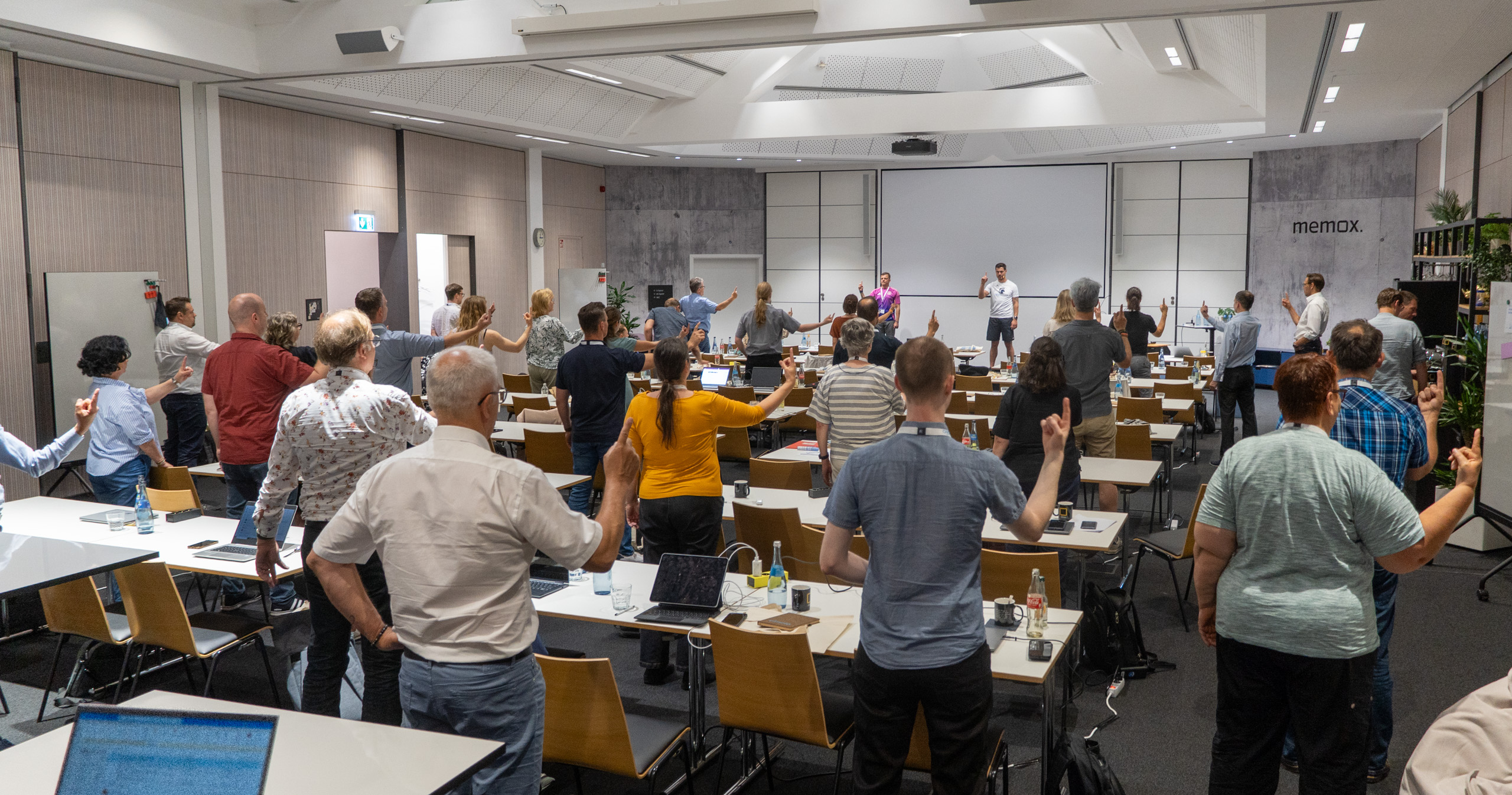

Keynote Speech: "Safe Room"
Christian Bott’s keynote speech, “Safe Room – How We Create Spaces Where Development Is Possible,” could hardly have been more spectacular. A volunteer from the audience was suddenly handed a practice sword. It became vividly clear how stressful it can be to stand facing someone with a sword. Moreover, the centuries-old art of sword fighting provided valuable insights into how to make decisions consciously.
For those interested in this topic, more information about the Safe Room is available here, and you can also listen to the podcast “Challenge Accepted.”
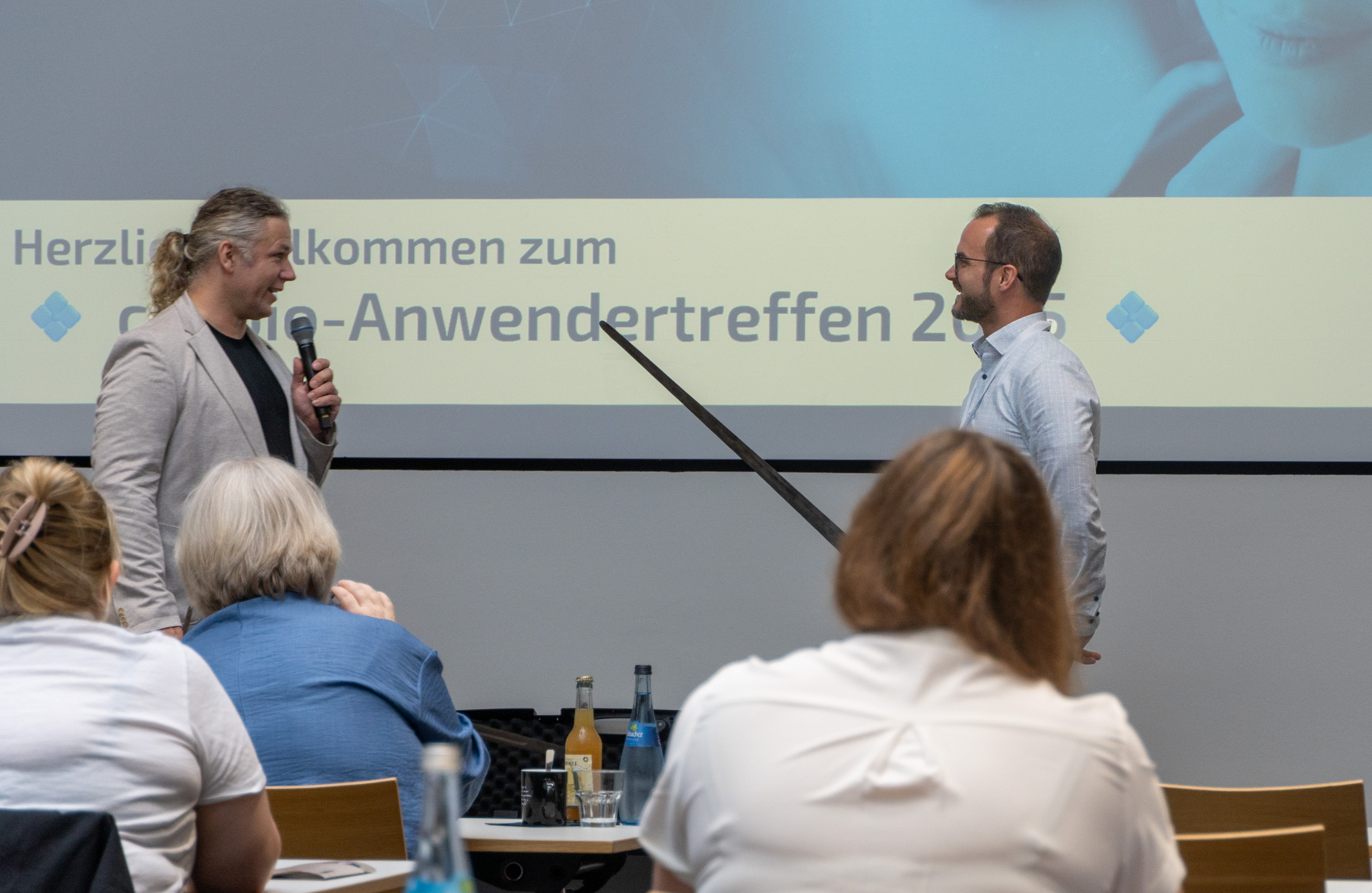
The supporting program of the 17th cimoio User Meeting
In the afternoon, another highlight followed: an entertaining city tour of Stuttgart with Silke Amos and her husband, who charmingly and knowledgeably guided us through the history, culture, and curiosities of the city.
The perfect end to the first day was a shared dinner at the stylish Plenum restaurant in the state parliament — with a relaxed atmosphere, delicious food, and plenty of conversations.
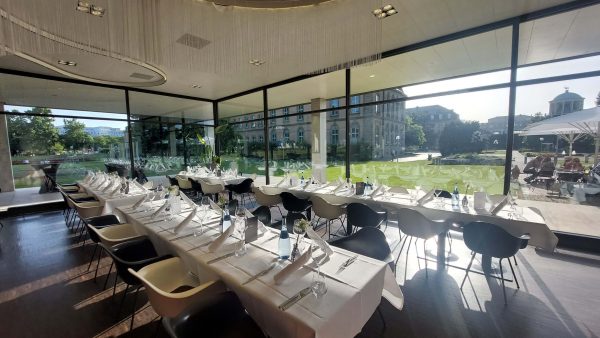
If you’d like to discuss the topics from our user meeting with us, please send us an email or use our contact form. We also welcome your comments about the event if you attended—let us know!
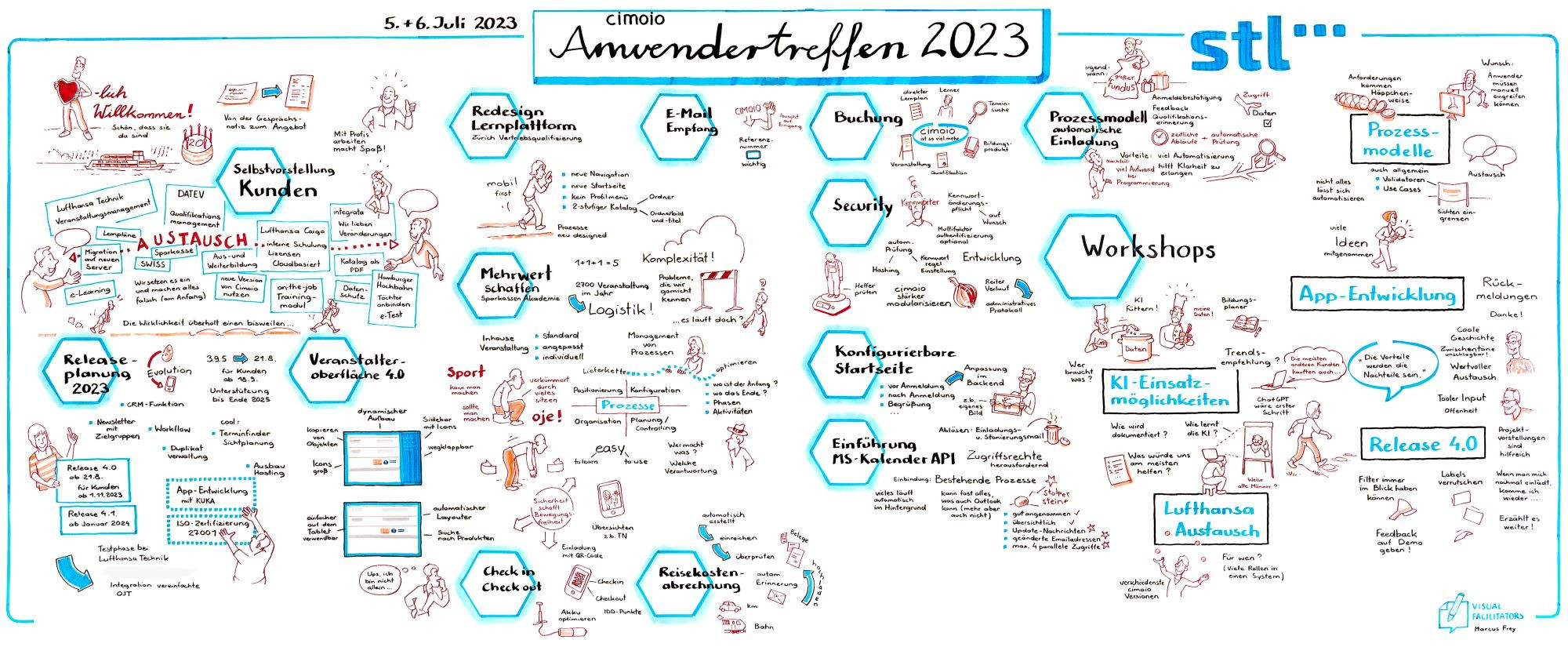
Recent Comments